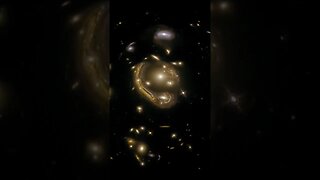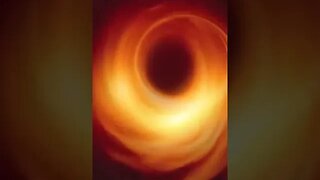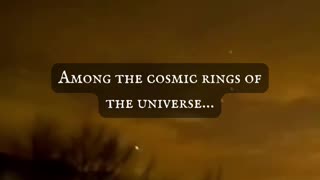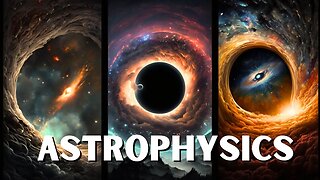Understanding Gravitational Lensing and the Einstein Ring Phenomenon #short
In December 2020, the ESA/Hubble team published a breathtaking image of GAL-CLUS-022058s, located in the constellation of Fornax. This image shows one of the largest and most complete Einstein rings ever discovered, created by the process of gravitational lensing. This phenomenon is where light shining from far away is bent and pulled by the gravity of an object between its source and the observer. In this case, the light from the background galaxy has been distorted into an almost perfect ring by the gravity of the galaxy cluster sitting in front of it.
A team of European astronomers used a multi-wavelength dataset, which includes inputs from the Hubble Space Telescope, to study this Einstein ring in detail. The team used a lensing model, derived from the Hubble imaging, to calculate the amplification factor, which allowed them to study the intrinsic physical properties of the lensed galaxy. They determined the galaxy’s magnification factor to be 20, which effectively makes the Hubble Space Telescope’s observing capability equivalent to that of a 48-metre telescope. This finding is larger than the currently planned extremely large telescopes.
Styx AI is developing innovative techniques based on quantum mechanics, depth maps, generative imaging, machine learning, and new mathematics to move the "looking glass" of complex nonuniform spacetime. Their process can break down an image into nearly infinite pieces, providing greater depth and detail to reveal previously unseen information.
Credit: ESA/Hubble & NASA, S. Jha
Acknowledgement: L. Shatz
Processed by STYX AI
#hubblespacetelescope #space #nasa #GravitationalLensing #astronomy #styxai #quantummechanics #machinelearning #galaxy
-
 1:00
1:00
Dr. Tim Taylor.
1 year agoUnderstanding Gravitational Lensing and the Einstein Ring Phenomenon #shorts #space #science
2 -
 1:22
1:22
Monkeysee
7 years agoNASA Studies Gravitational Lensing
4 -
 5:11
5:11
Monkeysee
7 years agoOn Science - First Gravitational Lens Study
4 -
 9:42
9:42
PBS_SpaceTime
6 years agoS2: The Strange Universe of Gravitational Lensing
37 -
 2:38
2:38
Mabdfaq0706
10 months agoDetail view of Cosmic ring
3 -
 0:20
0:20
MYSTERIOUSREALITIESNOW
1 year ago🔥Blazing Doughnut-Shaped Ring of Light Reveals Shocking New Details About Supermassive Black Hole!🌌
1 -
 0:11
0:11
DailyQuikFacts
10 months agoCosmic Rings
15 -
 4:06
4:06
Atomic Analyzer
7 months agoQuantum Gravity Demystified : Unraveling the Secrets of the Universe
137 -
 9:44
9:44
Navigating the Universe
2 months agoA brief introduction into the Interstellar Medium
13 -
 5:16
5:16
Dailydoseoffact
1 year agoAstrophysics Explained: From Stars to Black Holes
10